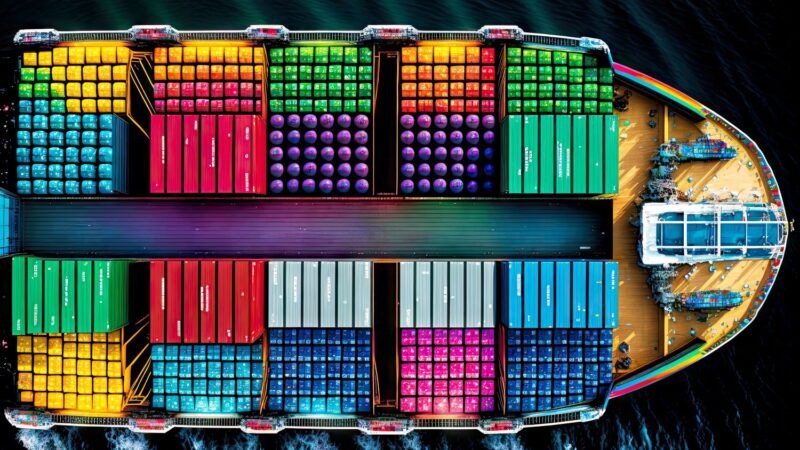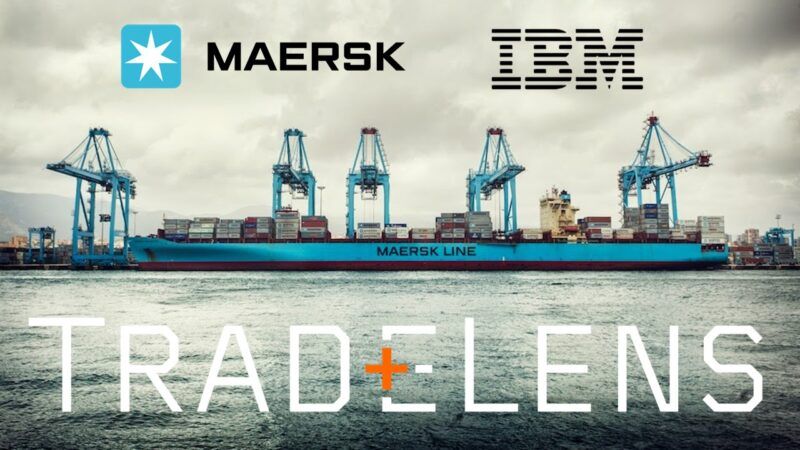 From its inception, 2M looked like a marriage of convenience between two shipping lines with very different backgrounds. (Getty Images)
From its inception, 2M looked like a marriage of convenience between two shipping lines with very different backgrounds. (Getty Images)
2M breaks up: the beginning of the end for shipping alliances?
The divorce between Maersk and MSC is a new scenario and a possible change in the roadmap of shipping lines. Will this break-up affect the price, capacity or service of container transport from 2025 onwards? Will other alliances follow and take the same path? We answer these and other questions.
 From its inception, 2M looked like a marriage of convenience between two shipping lines with very different backgrounds. (Getty Images)
From its inception, 2M looked like a marriage of convenience between two shipping lines with very different backgrounds. (Getty Images)
2M alliance announces break-up
The 2M alliance was born in January 2015 after an attempt by CMA-CGM, MSC and Maersk to create P3 in 2013. However, this alliance was rejected by Chinese regulatory authorities. The alliance between the latter, called 2M, which established a vessel sharing agreement (VSA) and ensured competitive and profitable operations on the Asia-Europe, Transatlantic and Transpacific routes, did succeed.
Specifically, the alliance allowed both to have 185 vessels on these routes, enabling Maersk Line, the container shipping arm of the group, to save USD 350 million per year. In 2015, Maersk had a market share of 15.5%, followed by MSC with 13.5%. They were first and second, respectively, in a ranking of twenty shipping lines.
To understand the context of this alliance, it should be remembered that 2015 was a difficult year for the industry. Shipping lines were at risk of bankruptcy. The Danish shipping line Copenship, for example, filed for bankruptcy after suffering losses in the dry bulk market.
Many others had to dispose of assets to stay afloat, because even as the global economy began to recover from the 2008 financial crisis, shipping was still burdened by debt resulting from heavy investments in their fleets during the boom years.
Maersk and MSC agreed to a minimum duration of the agreement for 10 years, until 2025, when, following the recent press release, the alliance will end. This announcement happens now because a two-year notice period was established in the event of a break-up.
The joint press release issued in January 2023 announced that:
"MSC and Maersk recognise that much has changed since the two companies signed the 10-year agreement in 2015. The discontinuation of the 2M alliance paves the way for both companies to continue pursuing their individual strategies."
Theo Notteboom, co-director of PortEconomics, writes that from its inception 2M looked pretty much like a marriage of convenience between two shipping lines with very different trajectories.

The reasons for a break-up
Stefan Verberckmoes, analyst at Alphaliner, said it is no surprise that 2M will end. “That was really a forced marriage, because at that time, economies of scale were very important, everybody wanted to have large vessels, and the only way to fill them was to cooperate. Now times are completely different. MSC is now able to fly on its own wings.”
Sea-Intelligence CEO Alan Murphy said in an interview with American Shipper that the strategic approaches of the two shipping lines have been completely at odds:
“Maersk has staked everything on being an end-to-end logistics integrator. Ocean transport becomes just a cog in a big machine. That cog just needs to work. You don’t need to necessarily make money on it because you’re making money on end-to-end logistics.”
“But MSC’s focus has seemingly been: We need to make money as a vessel operator. These two strategies have led to friction within the alliance. I wouldn’t say anybody is wrong here. It’s just that they don’t seem to be a good match.”
Moreover, international regulators have never lost sight of the effects of these alliances on the market. 2M, The Alliance and Ocean Alliance control 84% of the trade on the Asia-North America route, according to Unctad.
In 2020, the US Federal Maritime Commission (FMC) asked these three alliances to start submitting their global trade data monthly instead of quarterly to increase monitoring of their activity.
In Europe, the Block Exemption Regulation, the regulation governing shipping alliances, has been extended until 2024. This means that at least until 2024 shipping alliances for the joint provision of services will continue without infringing EU competition rules, not without controversy.
Potential market consequences
- Increased competition could lead to lower rates. Once the alliance is concluded, shippers will be able to choose between Maersk, MSC or another carrier, which could push a fight for customers. “In the short term (i.e. 2023) this will mean increased competitive pressure between the carriers which all else equal results in rates that are lower than they otherwise would have been,” says Lars Jensen, CEO of Vespucci Maritime.
- However, this drop in rates could come at the expense of a more volatile service and a higher number of blank sailings, Jensen added. This means less reliable shipping
- With demand subdued against a gloomy economic backdrop, some analysts have warned that the industry faces a significant oversupply of vessels, something that alliances have helped to manage. With the break-up of the 2M alliance, the industry "goes from three to four big players," says Alex Irving, logistics industry analyst at Bernstein. “Is that going to make it harder to find capacity discipline? Potentially. Is that going to put further pressure on ocean rates? It’s more likely that happens,” he added.
Looking ahead, Maersk's strategy will focus on consolidating its position as an integrated logistics supplier, while MSC wants to consolidate its leadership as a container shipping operator
Shipping alliances, yes or no?
Strategic alliances began to form in the mid-1990s and have evolved to the present day.
Alliances in Container Shipping
As described in The International Transport Forum's 'The Impact of Alliances in Container Shipping', today's alliances are considered the fourth generation. The first generation emerged in 1996. They were ambitious in scope but short-lived in practice, with the exception of the Grand Alliance. The second generation proved more stable, with three main alliances (New World, Grand Alliance and CKHY) active throughout this period with some minor changes in their composition.
A crucial change in the alliance model occurred in 2012, when major carriers started to form alliances. This was a reaction to the creation of the G6 Alliance in 2012, which brought together members of the New World Alliance and the Grand Alliance.
The generation of alliances between 2012 and 2017, the third generation, emerged between 2012 and 2017 and can be seen as a transition from the previous alliance model to a new type of alliance, the current fourth generation.
For Nottenboom, alliances play an important role in the survival of companies in depressed market conditions. However, their added value may be less obvious during good times, when carriers enjoy healthy financial positions.
Alliance membership can overcome the lack of economies of scale and network effects of individual carriers. The more extensive the overall service network of a member, the less benefit alliances bring in this respect.
The expert argues that the system of alliances between shipping lines implies a certain loss of individual operational independence, especially when designing joint liner services or selecting ports of call, which sometimes leads to tough negotiations or even conflicts between alliance members.
In recent years, MSC and Maersk have shown more pragmatism in entering into vessel sharing agreements (VSAs) with other carriers, even on trades that are part of the 2M alliance.
Finally, alliance membership is increasingly difficult to reconcile with far-reaching vertical integration strategies in the field of inland logistics, air transport, e-commerce, etc. Maersk, in particular, is strongly committed to the transition to a global logistics player with a supporting role for liner shipping and terminals.

Maersk and MSC's future moves
Maersk: logistics integration
Since 2016, Maersk has moved from being a container shipping giant to an integrated logistics provider, investing in air and land services. But it hasn't quite made it yet, says Theo Notteboom. The Danish shipping company faces competitors more used to dealing with the complexities of road, rail and air transport, such as DHL, Kuehne+Nagel... and one day, perhaps, Amazon.
In this context, Maersk communicated the decision to adopt a single identity and integrate brands such as Hamburg Süd (acquired in 2017, Sealand (acquired in 1999), Twill, Senator and LF Logistics to operate under the Maersk name. This decision seeks to achieve strategic growth through integrated logistics, with the intention of managing it under one brand.
MSC: sailing solo
Although both claim that the decision to separate is mutual, the alliance has brought far more benefits to MSC and continues to do so at the time of its demise. MSC has grown faster than any other shipping line in the last two years, taking the top spot from Maersk.
In 2015, Maersk and MSC had a fleet capacity of 3 million TEU and 2.5 million TEU respectively. By early 2023, MSC reached 4.6 million TEU to Maersk's 4.2 million TEU.
In the process, MSC has learned a lot from its rival in terms of service and reliability. In November last year, MSC overtook Maersk as the world's most reliable container shipping operator in terms of punctuality.
Theo Nottenboom highlights a more relevant fact: MSC has an order book of more than 1.8 million TEU, compared to Maersk's 358,000 TEU. Unlike twenty years ago, new ships are now a very important cornerstone for MSC's fleet expansion, while Maersk seems to have slowed down a bit in this area. The new record ships no longer belong to Maersk, but to MSC.
Jensen, who has been predicting the demise of 2M for months, said in a post: My view is that this is only the beginning of a re-shaping of the alliance/VSA constellations on especially the major east-west trades. In essence this should be seen as the first domino of many to fall over the next 1-2 years.”
The long-term consequences of this divorce will largely depend on the evolution of demand for containerised traffic up to 2025 and beyond.






